LAB REPORT
Science and Technology Making Headlines
March 20, 2020

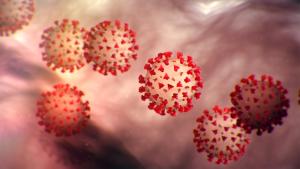
Due to shelter-in-place orders in response to the COVID-19 pandemic, LLNL is in a state of Minimum Safe Operations.
COVID-19 causes Lab to operate at minimum safe operations
In response to the growing impact of the COVID-19 pandemic, the Laboratory has moved to Minimum Safe Operations. This move complies with the various county shelter-in-place orders, state and federal government recommendations, and — most importantly — enable the Lab to protect the health and safety of the workforce.
During Minimum Safe Operations, the Laboratory will reduce on-site staffing to a minimum number necessary to ensure the safety and security of the site and its facilities, as well as to carry out a very limited number of mission-critical activities. All other on-site activities are temporarily halted. This transition is expected to take several days, with Minimum Safe Operations fully in place by Monday, March 23. Employees who are involved in this transition process or assigned to the limited mission-critical activities will be notified directly by management.
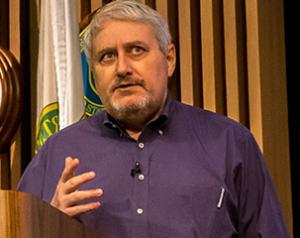
LLNL Director Bill Goldstein recently participated in a podcast where he discussed everything Lab-related.
Solving the biggest threats
Lawrence Livermore National Laboratory Director Bill Goldstein recently participated in a podcast on a PlayerFM “Mission Daily” episode where he discussed how LLNL is hard at work protecting Americans and solving some of our largest existential threats; from protecting the nuclear stockpile to fighting global pandemics.
Goldstein has been at the helm of that ship for more than six years and has overseen some of the world's most incredible projects including nuclear development and how deterrents help prevent attacks rather than instigate them; the work that LLNL is doing to help slow climate change, and how there is the potential to get California to zero carbon emissions by 2045.
Goldstein also shared his thoughts about coronavirus and the long-term outcomes of this pandemic.

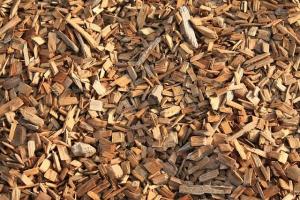
Biomass such as agricultural and forest residues can be converted into renewable hydrogen.
Scrub a dub
Achieving climate neutrality and negative emissions requires not only continuing to reduce greenhouse gas emissions from all sources, but also pulling carbon dioxide out of the air.
California can readily and cost-effectively reach its goal to achieve climate neutrality by 2045 and begin to reverse climate change, according to a recent report led by Lawrence Livermore National Laboratory and authored by more than 20 researchers.
The report shows how the state can meet those targets much sooner. Achieving climate neutrality and net-negative emissions requires not only continuing to reduce greenhouse gas emissions from all sources, but also pulling carbon dioxide out of the air, so eventually more is removed and stored from the atmosphere than we put into it.
Many carbon removal strategies scrub carbon dioxide from the air and reduce emissions from sources on the ground, by generating renewable energy or supporting carbon capture from industrial facilities. For some strategies, these “avoided emissions” are of similar magnitude as the level of carbon removal — offering double climate benefit.

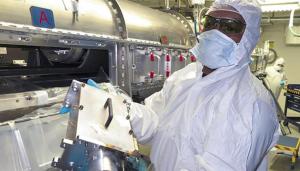
Target area operator Bill Board removes a neutron imager snout from a diagnostic instrument manipulator at the National Ignition Facility.
Paving the way to ignition
At its peak, a National Ignition Facility inertial confinement fusion (ICF) implosion lasts about 100 trillionths of a second. The imploded fuel is a hundred millionths of a meter in diameter and as much as eight times denser than lead. The center of the imploded capsule is a few times hotter than the core of the sun.
Developing a clear understanding of exactly what's happening in a NIF implosion under those extreme conditions is one of the biggest challenges researchers face as they work toward achieving fusion ignition on the world's largest and highest-energy laser system.
To help meet that challenge, Lawrence Livermore and its partner laboratories and universities have designed and built an extensive suite of more than a dozen nuclear diagnostics, with more on the way.
"What you'd like when diagnosing the implosion is to know everything about the imploding plasma," said LLNL physicist Dave Schlossberg.
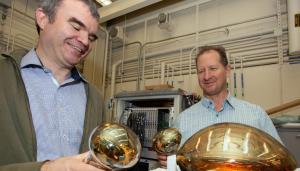
LLNL physicists Adam Bernstein (right) and Nathaniel Bowde, examine sensors known as photomultiplier tubes, which are used in the WATCHMAN and PROSPECT neutrino experiments. Photo by Julie Russell/LLNL
A tiny particle to help solve a big problem
For more than six decades, scientists have been developing instruments for fundamental physics that can detect antineutrinos, particles that have no electric charge, almost no mass and easily pass through matter. Antineutrinos are emitted in vast quantities by nuclear reactors, and since the 1970s, scientists have considered turning antineutrino detection into a tool for nuclear security.
With advances by scientists at Lawrence Livermore and other institutions, researchers are moving closer to the day when they can deploy technology to remotely monitor these subatomic particles from nuclear power plants at long distances.
Such a breakthrough would allow them to warn international authorities about the illicit production of plutonium, a key material for nuclear weapons. It also could help with verification of existing and planned treaties that seek to limit nuclear weapons materials production worldwide.





